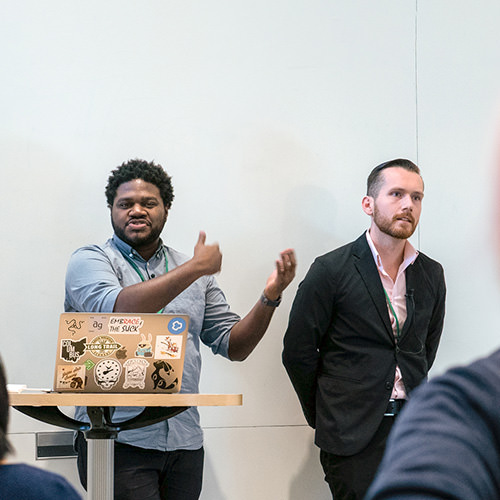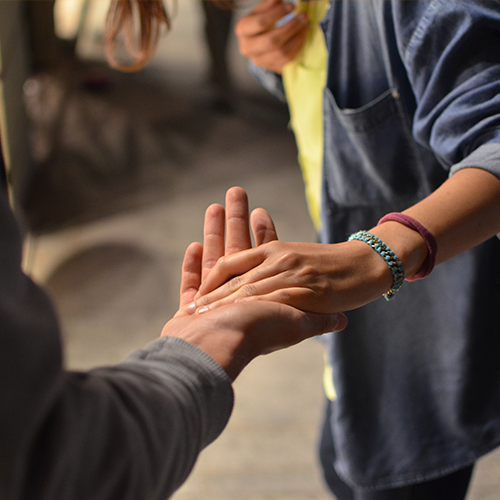Even if your pronunciation is good, you might have struggled with getting voice assistants to understand you. It can be particularly frustrating in a time when we expect our virtual butlers to “learn” our voices. So in a quiet house with equal proximity to a voice-recognition assistant like Alexa or Siri, what makes the difference between an answer and a virtual shrug?
For most modern voice assistants, who were trained on a biased selection of voice samples, the sad truth is that they will have a harder time recognizing your commands if you are from a rural or low-income area, have a non-native English accent, or are a woman. The more of those factors that apply, the worse it gets.
You’ve probably experienced this even if you don’t fall into any of those categories. Voice assistants notoriously struggle with non-English place names or dignitaries (such as “Galileo Galilei Way” or “Xi Jinping”).
These biases are troublesome beyond temporary frustrations. They exclude massive portions of the world’s population in ways that continue to divide our society and deny people a sense of belonging. Technology causes lasting harm when it excludes underrepresented groups from opportunities - or worse, when it puts them in danger because their needs weren’t considered.
As these examples show, when you’re aiming for inclusiveness in designing your product or service, ensuring access to the product is not enough.
Accessibility ≠ Inclusion
As designers, if we only focus on accessibility, we will lose a wealth of delightful connections with all sorts of users because we will fail to look beyond physical inequality and consider socioeconomic inequality, political inequality, or inequality of opportunity.

The Americans with Disabilities Act of 1990 was instrumental in forcing businesses to provide reasonable accommodation to people with all sorts of impairments. However, there are plenty of cases where a designer poorly retrofitted existing architecture to meet the letter of the law. While the design shown here could technically be considered “accessible”, it’s nowhere near as inclusive as it would be if the needs of a wheelchair user had been taken into consideration when access to the upper level was originally designed.
Vernā Myers has written that “diversity is being invited to the party; inclusion is being asked to dance,” but that isn’t the whole truth. Being asked to dance isn’t enough—what if we didn’t pick the right songs or create a good atmosphere for all of our party-goers? We need to include them on the party planning committee, and make sure they get to help put together the set list, too. Inclusion is about the process we use to arrive at our designs, not just the result.
A North Star for Inclusive Design
Inclusive design means drawing on the full range of human diversity. It means recognizing that the range of diversity is larger than we think. Every product we design, every service we craft, could potentially benefit someone new. It’s incredibly short-sighted to deny their potential because they’re on the other side of an imaginary line on the globe, or because they grew up differently than us, haven’t had the same opportunities as us, or have different needs than us.
“We should all understand how each of us is an individual and is unique, but also focus on what is universally important to all of us. That way, we can increase access, reduce friction, create a more emotional connection—in literally whatever you design.” — Tim Allen, Partner at Microsoft (formerly of Wolff Olins, Amazon, and R/GA)
We have the privilege to decide who we design for. All of them have intrinsic value and promise, and should be considered as a potential audience for any of the things we may design. How are we treating them with respect and dignity? How are we giving them a sense of belonging in the world?
The inclusive design team at Microsoft provides a great framework for building empathy and designing more inclusive products. Their three keys to being more inclusive are:
- Recognize exclusion.
- Learn from human diversity.
- Solve for one, extend to many.
Recognize Exclusion
Start by working to eliminate exclusive design. You have to have the self-awareness to recognize your own biases. Don’t stop at designing and marketing products for underrepresented groups—if a group is being underrepresented, call it out. Better yet, find someone from that group and invite them to work on the project or provide input. A designer needs to be a voice for ethical inclusive design in the room. Consider how the ACLU is raising alarm bells because Amazon is considering adding face surveillance to their smart doorbells. It’s our responsibility as designers to advocate for testing with underrepresented groups, and to design solutions that won’t aggravate existing issues such as poor facial recognition for at-risk groups for people of color and women.
As designers, we have to work to change our own internal narratives as well. Work hard to change attitudes around what “normal” is. It’s incredibly easy to get trapped inside our own heads and forget that what’s normal for us may not be normal for others. Remember the first time you heard about someone who put peanut butter on their pancakes? We should all be willing to shift our own internal paradigms, or at least put them aside.
Eschew labels like “disabled,” “impaired,” and “foreign.” These words are limited by a single point of view. There’s a myriad of needs to consider beyond our personal ones. As Robin Christopherson has said, “we are all only temporarily able-bodied”. Our needs change throughout our lives. At any point, your world could shift, and the interface you designed for someone else could suddenly become essential to you as well. The experience you redesign to be more accessible to the blind now may make your life easier in the future if your eyesight worsens. Be comfortable with change. Be willing to practice empathy and walk in someone else’s shoes.
Learn from Human Diversity

Empathy means spending time with others to experience their perspective. Strive to consume content more frequently from those who are different than you. Try to embrace their points of view, or at least understand why they feel the way they do. This is often uncomfortable at first, like reading posts from your older relatives on Facebook. You have to push through and consider the world they live in. Their hopes, dreams, fears, and insecurities can provide you with valuable insight into how to design for their needs.
Be flexible in your thinking. Communicate with others often, and use teamwork to gain new points of view. The more sources of input we gather, the more diverse our own perspectives become. Admit when you’ve reached the limits of your own method of thinking, and don’t be afraid to ask for help from someone with a conflicting viewpoint. This help can come from others on the team, from research, from interviews, or by asking a colleague to provide an alternative perspective. The web makes this easier than ever, but if you’re unable to find those diverse perspectives, start with empathy exercises to build an understanding of underrepresented groups.
Solve For One, Extend to Many
When we design a product for one group of users, we may find that it works well for others too. We have to think outside the spheres of influence we normally spend time in. When we do this, we find inspiration for great projects like Microsoft’s Adaptive Controller, Pinterest’s search for makeup based on skin tones, and a tilting sink for wheelchair users and children. Learning how others adapt to the world around them sparks innovative thought.
Here are a couple of other solutions to design challenges that can inspire how you work in your own spheres. Each was created to benefit a specific underrepresented group, but could be scaled to benefit many other groups facing similar challenges.
- Mozambique is a country with 22,000 miles of roadways, and almost 80% of them are unpaved. How else do you improve medical outcomes when you can’t reliably transport patients, lab samples, or medication? Drones are one way to bridge the care gap, by delivering medication and lab samples to where they’re needed most. Technology can solve this specific problem, but it can also then be applied to rural areas like Montana, the Northwest Territories in Canada, or other remote areas of the world.
- In India, a country of 780 languages with almost as many different writing systems, it can be impossible to reach an audience beyond those in your direct cultural group. Google is helping to facilitate content creation in India by providing new tools for listening to webpages, as well as translating PDFs containing text in Indian languages into an editable format. These new content management tools are making the web more relevant for Indians as more content is created in, or translated into, their native languages. These same tools can give a voice to underrepresented communities. They could help preserve endangered languages and cultures like the Pawnee in the United States, the Ainu in Japan, or the Mixtec in Mexico.
- China is attempting to leapfrog the US in technology while modernizing a still mostly rural country. With vast populations of billions of people connected through smartphones and apps like WeChat, new technological solutions to social problems become possible, such as “rural Taobao,” an extension of Alibaba’s enormous e-commerce market into far-flung areas, through which “even the most remote villages can buy cotton bedding… and the end-to-end logistics are taken care of.” These digital payment and shopping solutions could serve as a model for the future of economies worldwide.
Design For the Entirety of the Human Experience
When we design diverse products, we find opportunities to uncover the shared experience that unify us. Inclusive design builds trust and increases adoption; it’s a virtuous cycle that encourages investment into inclusive platforms that serve more users. When we consider examples such as these, and how they solve very human problems—access to healthcare and goods in rural areas, staying connected despite the vastness of the earth, communicating a shared human experience across the languages that separate us—the purpose of inclusive design becomes more clear. We have three opportunities in front of us as designers:
- Eradicating exclusive designs and improving human access to the world (digital and physical)
- Advocating for underrepresented groups
- Creating products that embrace the full range of human diversity
As Ian Lynam has said, “Design should express the richness of our era”, and thanks to connected technology, we have more access to the entirety of human knowledge than ever before. If you limit your thinking to a Western, affluent, white, male perspective of the world (for example), you are designing for a small slice of your 7.4 billion potential users. You must step outside your comfort zone, and begin designing solutions to the problems all of your users face—not just the problems that you share.




